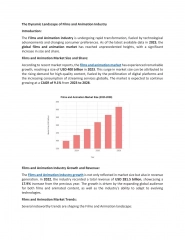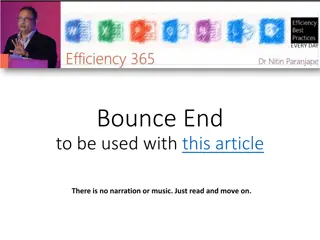
Incomes, Hours of Work, and Equality in Europe vs United States
Explore the comparison of G8 economic performance, the significance of GNI per hour worked, and the importance of extending standard measures of income. Discover how hours of work impact income and the labor force in various countries.
Download Presentation

Please find below an Image/Link to download the presentation.
The content on the website is provided AS IS for your information and personal use only. It may not be sold, licensed, or shared on other websites without obtaining consent from the author. If you encounter any issues during the download, it is possible that the publisher has removed the file from their server.
You are allowed to download the files provided on this website for personal or commercial use, subject to the condition that they are used lawfully. All files are the property of their respective owners.
The content on the website is provided AS IS for your information and personal use only. It may not be sold, licensed, or shared on other websites without obtaining consent from the author.
E N D
Presentation Transcript
Incomes, Hours of Work, and Equality in Europe and the United States Presentation at 28thVilla Mondragone International Economic Seminar, Rome, 23-24 June 2016. Thorvaldur Gylfason
Two parts Comparison of G8 economic performance shows the EU surpassing the US GDP or GNI per capita can be misleading GNI per hour worked, esp. if adjusted for income distribution, is more informative, as is also Human Development, incl. education and health Discussion of overall success of the EU Peace, with open arms Prosperity based on efficiency, fairness, and human rights
Standard measures of income need to be extended GDP and GNI per capita leave many things out Underground economy (Italy showed the way) Home production Movements of national assets and liabilities E.g., environmental degradation, external debt, Social indicators (Deaton, Stiglitz, ) Human Development Index reflects education and health as well as incomes Income distribution Assess economies in two dimensions like stocks with risk and returns Hours of work
Importance of hours of work Income per hour worked is a better measure of the standard of life than income per person because income per hour worked reflects the effort behind the income earned Most people would prefer unchanged income combined with less work if given a choice Source of data on GDP per hour worked: Economists at University of Groningen in the Netherlands, originally led by Prof. Angus Maddison
Hours and work Hours per worker Labor force participation 2,500 80 70 2,000 60 50 1,500 40 1,000 30 20 500 10 0 0 Canada France Germany Italy Japan Russia United Kingdom United States Canada France Germany Italy Japan Russia United Kingdom United States 1990 2016 1989 2014 Sources: World Bank, World Economic Indicators, and The Conference Board Total Economy Database , May 2016.
G8 countries: Hours of work matter GNI per capita 1990 and 2014 (Current USD, PPP) GNI per hour worked 1990 and 2014 (2015 USD, ppp) 60000 80 70 50000 60 40000 50 30000 40 30 20000 20 10000 10 0 0 Canada France Germany Italy Japan Russia United Kingdom United States Canada France Germany Italy Japan Russia United Kingdom United States 1990 2014 1990 2014 Sources: World Bank, World Economic Indicators, and The Conference Board Total Economy Database , May 2016.
Measuring GNI per hour worked ? ? ? ? ? =? ?= ? ? ? ? Y is GNI H is hours Q is population E is employment L is labor force E/L = 1 u/100 where u is unemployment rate in % L/Q is labor force participation rate
Adjusting for income distribution ????= ? 1 ???? Crude method, used in Human Development Report, of reducing a two-dimensional phenomenon to one dimension Gini is roughly the ratio between the geometric and arithmetic means of the relevant distributions
Adjusting for income distribution Unadjusted and adjusted GNI per hour worked 2014 (2015 USD, ppp) HDI and adjusted HDI 2014 1 80 0.9 70 0.8 60 0.7 50 0.6 0.5 40 0.4 30 0.3 20 0.2 10 0.1 0 0 Canada France Germany Italy Japan Russia United Kingdom United States Canada France Germany Italy Japan Russia United Kingdom United States HDI Adjusted HDI GNI per hour Adjusted GNI per hour Source: United Nations Development Program and author s computations.
Double adjustment for income distribution and hours Adjustment of the HDI for income distribution lowers the US rank by 20 i.e., from #8 to #28 Adjustment for hours of work weakens the US position vis- -vis the EU where hours are generally shorter Adjustment for both at once seems likely to relegate US to 7th place in G8, ahead of Russia Remains to be done
EUs success on several fronts Helped keep the peace in Europe since 1945 Promoted prosperity by stressing efficiency, fairness, and human rights With open arms, welcomed formerly autocratic countries back into European fold Helps to explain continued attractiveness of EU membership to all but the most inward- looking countries in Europe
EU vs. US American workers spend 1,800 hours per year at work compared with 1,400 hours in Germany and 1,500 hours in France In 1960, average American was 3 cm taller than average German whereas, today, average German is 3 cm taller than average American (Komlos) Middle-aged non-Hispanic white Americans have faced declining life expectancies since 1999 due to a sharp rise in life-style related diseases and suicides (Case and Deaton, 2015)
Conclusion With more members, the average size of EU countries continues to decrease Small countries have higher per capita incomes than large ones because various benefits of small size, including cohesion and homogeneity, seem to outweigh the costs due to diseconomies of small scope and scale and small pools of talent Independence aspirations of Catalonia, Scotland, and others need not be viewed with alarm






















